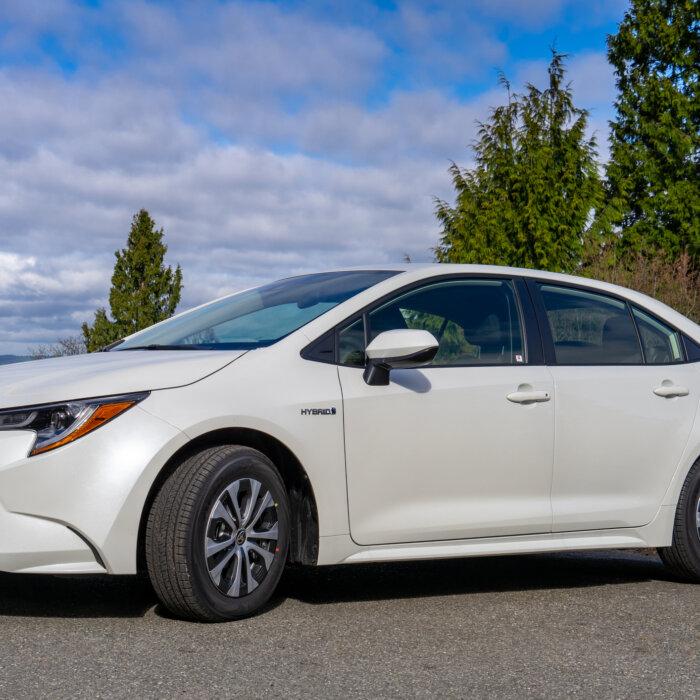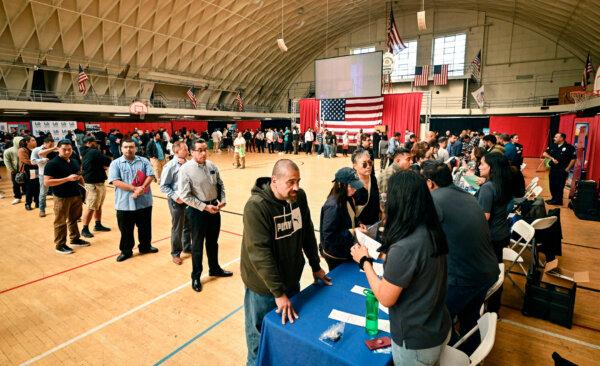For most Americans, affording a car is far more difficult now than it was before the COVID-19 pandemic, and it’s not getting much easier.
The U.S. automotive market is returning to normalcy after years of supply chain issues, depressed demand for new cars, and low vehicle inventories.
However, a new or used car is often too expensive for Americans who are already battling inflation that’s making financial decisions more difficult than they were a few years ago.
“Cars are not nearly as affordable today as they were five years ago,” Karl Brauer, an executive analyst at car search engine and price aggregation service iSeeCars.com, told The Epoch Times.
In 2019, a consumer with a budget of $20,000 could afford about 50 percent of the used cars on the lot in the United States, Brauer said.
In 2023, only 13 percent of used cars fell within that price range.
Things are harder for new car buyers, especially when high interest rates are added to already elevated car prices.
The average American’s credit score is about 700, according to Experian PLC and Equifax Inc. data. That qualifies a buyer for a loan with about a 7 percent interest rate.
In June, according to Cars Commerce, the average list price of a new car was $49,500. The most desired new car, the Ford F-150, averages about $58,000.
Skyrocketing Prices, Interest Rates
The U.S. Bureau of Labor Statistics (BLS) monitors the cost of living in the United States through the consumer price index (CPI), which includes food, clothing, shelter, fuel, transportation, service fees, and sales taxes.According to CPI data maintained by the Federal Reserve, the cost of living in the United States ballooned by 22 percent between 2019 and 2024.
The median household income in the United States was about $74,500 in 2022, according to the U.S. Census Bureau.
Federal Reserve Bank of St. Louis data show that the median income was $78,250 in 2019.

By comparison, the median household income rose over a longer period—from 1984 to 2022—by 31 percent. The cost of living, as measured by the CPI, tripled during the same period. The BLS sets 1982 to 1984 as its baseline years for the CPI.

In line with inflationary trends, the average price of a new car rose by about 41 percent between January 2021 and May 2024, according to data published by Cars Commerce in July.
The average list price of a new car was just above $50,000 in May 2024. In January 2021, it was about $35,000.
Used Car Prices
Used cars have had an even larger price hike than new cars. Between May 2020 and May 2024, the average list price of a used car rose by 52 percent. In March 2020, the average price was just under $20,000. In May 2024, it was slightly above $30,000.In an effort to halt the pace of inflation while avoiding a recession, the Federal Open Market Committee sharply hiked the federal funds effective rate to 5.33 percent in August 2023 from 0.08 percent in February 2021. The rate has sat at that level since then.
For now, the rate hikes translate to an increased cost of borrowing for all consumers. This especially affects car buyers, as the overwhelming majority of transactions are financed.

A July 2 report published by Edmunds, an automotive industry information website owned by used vehicle retailer CarMax Inc., found that new car buyers in particular are currently “stretched to their financial limits.”
Edmunds said that in the second quarter of 2024, the average interest rate on a financed new vehicle purchase rose to 7.3 percent, and the average monthly payment rose to an all-time high of $740.
Most buyers—70 percent—are taking out loans lasting more than five years. Additionally, 17.8 percent of consumers are making new vehicle payments above $1,000, Edmunds said.

A February 2024 report from the Federal Reserve Bank of New York found that auto loan delinquencies were higher in the first quarter of 2023 than before the COVID-19 pandemic.
Trouble on the Horizon
Despite the delinquencies, Lindland said the U.S. automotive industry—including dealers and automakers—is currently quite strong. Cars Commerce is expecting about 15.9 million vehicles to be sold in 2024.The entire industry is in “recovery mode,” Lindland said, after enduring the government response to the COVID-19 pandemic, followed by supply shortages and a temporary work stoppage in 2023 by the United Auto Workers.
Brauer disagreed, saying he sees a mixed situation. Lack of demand led automakers to cut production in 2020 and 2021. Fewer cars on the lot, paired with rebounding demand after the COVID-19 pandemic era, allowed dealers and automakers to turn a greater profit on every vehicle sold.
In 2023, the so-called big three U.S. automakers—Ford, Stellantis, and General Motors—all reported billions in profit.
In their year-end earnings announcements, Ford reported a $4.3 billion profit, Stellantis—a Dutch company that makes Chrysler, Dodge, Jeep, and Ram models—told investors it made an 18.6 billion euro (about $20.7 billion) profit, and GM brought home a $10.1 billion profit.
However, Brauer said the industry sees trouble on the horizon because of U.S. regulations that compel automakers to produce electric vehicles.
Electric vehicles are costly to produce, aren’t in demand, and are sold at a massive loss even at an average cost of $70,000 for a new car. Ford is losing $130,000 on every EV it sells, Brauer said.
The new car supply, according to Cars Commerce data, is recovering but not yet at pre-COVID-19 pandemic levels. As of May, national dealer inventory stood at a little more than 2 million units.
The national monthly dealer inventory of new cars dropped to just under 1 million units in September 2021, according to Cars Commerce data. That was a massive drop from more than 3 million units in January 2019.

Lindland said the supply recovery means that new car consumers can get what they want: big cars with lots of safety features, the latest technology, and plenty of options for engine size, drivetrain, and trim level.
Nevertheless, with short supply and high demand, automakers and dealers aren’t compelled to offer incentives and discounts to move new cars off the lot.
Brauer said most new vehicles are selling above their median suggested retail price—recently by as much as 20 percent above sticker price.
Moreover, he said, today’s new car consumer isn’t interested in buying a baseline trim. This is forcing automakers to discontinue more basic trim options and what he called weaker models.
“The new car market is slowly returning to pre-COVID levels of balance between supply and demand,” Brauer said.
As for the used car market, according to Cars Commerce, the dealer inventory dropped to slightly more than 2 million units in May 2024 from just under 3 million units in January 2019.
Lindland said the used car market is challenging because supply is not growing. The supply in the first half of 2024 was 18 percent lower than it was in the first half of 2019.
Lindland and Brauer said drivers are holding on to their cars longer because they don’t want to trade them in and buy an expensive new car.
“That’s constraining the used car market,” Lindland said.
Brauer said the volume of used cars sold always far outstrips the volume of new vehicles, but the current market is putting a new car out of reach for most low- and middle-income Americans.

Continued strong demand for cars, even in the face of massive challenges posed by the high prices and loan interest rates, shows that car buyers are resilient despite growing financial difficulties.
Nevertheless, Lindland said rising costs of goods and services remain a significant concern for shoppers. Cars.com surveys indicate that 31 percent of car buyers say they are worried about inflation.
She said inflation is forcing consumers to spend less on vacations, recreation, dining out, and entertainment.
Brauer said the resiliency may lie more with the richest buyers than the average American. He said sales of large vehicles, top-level trim, and luxury models show that the wealthiest consumers are best positioned to weather the trials of recent years.
“In spite of the economic challenges that have been growing in the background, there’s more than enough people who are able to essentially ignore them and continue to buy what they want,” Brauer said.
Automakers know that they can set whatever price they want for the most-wanted new cars and people will pay it, he said.
New trucks, sport utility vehicles, and luxury cars are still driving off the lot in short order despite being out of reach for a growing number of consumers.
“I think plenty of middle-class people are more concerned today than they were six, 12, or 18 months ago, with regard to their ability to afford what they need and to pay their bills—in spite of how healthy the car market appears to still be right now,” Brauer said.















